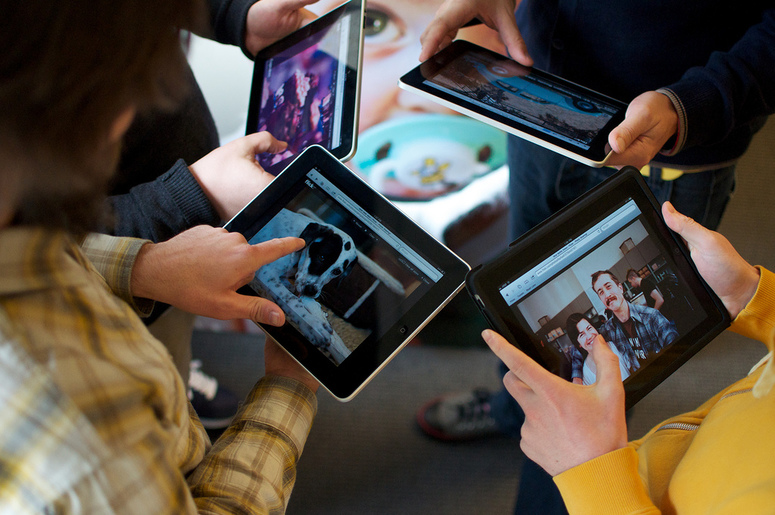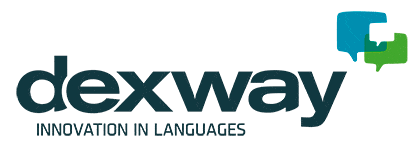Traditionally, formal language lessons took place in a classroom with students at their desks and a teacher at the front. Almost all speaking and listening practice took place in this format, and students were given grammatical and vocabulary based tasks to complete in their own time.
This typical model has already changed a great deal. More and more language schools have embraced the virtual classroom and many have taken their teaching online. Educational software, particularly learning management systems (LMS) have made managing these processes far easier.
Language learning may have come a long way in the past few decades, but there’s certainly a lot further for it to go.
What will language education look like in the future?

Learning methods will be blended
The internet has provided countless opportunities to access teaching online via websites, apps and learning software. However, there is still a great deal of benefit to be gained from working with a real teacher, whether that’s through in-person contact or via a virtual classroom.
Many language schools are already offering a blended learning model to their students. This means that learners get all the benefits of working with an experienced teacher, but they are also able to access resources, activities and assessments on demand from the cloud. This can be hugely effective, and it’s highly likely that this teaching method will become the educational standard of the future.
Students will be able to learn at any time of day or night
We are moving ever closer to a twenty four hour society. More and more in the future, people will expect to be able to access the resources they need whenever they want them. It will become increasingly important for language schools to be able to meet this need.
No longer will students be happy with static courses that run at a fixed time each week. Instead, they will want to be able to access the virtual classroom at a time that suits them. Language schools will need to invest in high quality LMS software to enable them to meet these requirements.
Learning will be done on handheld devices
Learning has moved from in the classroom, through teaching online and into handheld devices such as tablets and smartphones. Language learning apps have quickly become very popular.
In the future, we believe that students will no longer be satisfied with solely activity-based mobile learning. Instead, they will want to access all the traditional benefits of learning from a teacher; but they’ll want to do it from a virtual classroom on their mobile device.
Feedback will be instant
The days of waiting a week or more to receive grades and feedback on project work are very likely to soon become a thing of the past. LMS software is making the assessment process far more efficient.
Language learners are now able to receive instant feedback on digital activities including revision, vocabulary practice, pronunciation techniques and assessment. When language schools provide teaching online, this assessment automation is often one of the biggest benefits.
Virtual campuses will become a necessity
Digital learning spaces are becoming more and more ubiquitous. They are beneficial for students who are learning at a distance and are unable to access in-person facilities. However, they are also very popular with students who don’t have geographical constraints.
The virtual classroom and the wider virtual campus gives students the freedom to access learning resources from wherever they are. This could be the other side of the world, or it could just be from the comfort of their own home a few streets away from the language school. Using an LMS to provide quality teaching online gives far better opportunities for communication, revision, real time speaking practice and community building.
Learning will be more flexible
One of the major benefits of the growth of the digital world is that it has given us far greater flexibility. This flexibility allows students to have far more control over the pace of their own learning. They are able to use a virtual classroom within an LMS to access learning materials and facilities on demand.
This means that they are able to work through materials as quickly or as slowly as they choose. They can also gravitate towards the type of learning content they know works best for them, switching between revisions activities and live teaching online whenever they want.
The future of language learning has a great deal to get excited about. The virtual classroom, provided by a learning management system (LMS), is going to play a huge role. Students will be able to access all the resources they need from one virtual environment. As educational platforms are cloud-based, students will be able to get the access without having to download or purchase any software of their own.
We think the best way to plan for the future of education is to embrace the most advanced and up-to-date technology now. Language schools who aren’t already offering a virtual classroom to their students may want to look into the software options that are available to them.
You may also like:
- Learning Methodology: strengthening your students’ skills
- Educational Technology, an Opportunity for Language Academies
- Why does your school or college need an English Lab?
